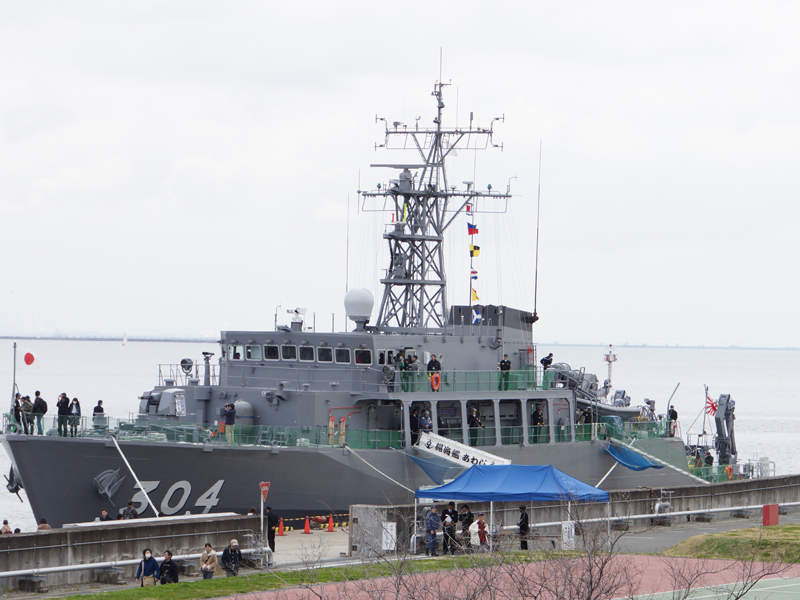
Japan goes ‘Extra Small’ to target China’s big, expensive warships & monitor foreign vessels
TOKYO : In a year marked by increased maritime activity by Chinese warships, Japan’s Maritime Self-Defense Force (MSDF) has deployed smaller or less-capable vessels in over 70% of its missions to monitor foreign naval presence.
An analysis conducted by The Yomiuri Shimbun highlights the MSDF’s challenge due to an insufficient number of high-level surface combat ships, like destroyers, essential for such surveillance and warning operations.
As foreign naval vessels, particularly from China and Russia, continue to navigate closer to Japan with greater frequency, the Defense Ministry is intensifying efforts to bolster the monitoring and warning capabilities of the MSDF fleet.
The MSDF vigilantly monitors foreign warships in Japanese waters using combat ships and patrol aircraft. The Air Self-Defense Force also promptly responds to foreign military aircraft nearing Japanese airspace.
Overseen by the Joint Staff office, the Self-Defense Forces manage and publicize the movements of foreign vessels in crucial sea routes around Japan.
Since its initial disclosure in 2007, data related to these missions indicates a substantial increase in foreign naval activities being monitored, rising from two cases in 2007 to 112 as of November 5 this year.
The report said there is an increase in cases where the MSDF has dispatched smaller vessels or support units for these operations. The percentage of such deployments, which stood at 4% in 2012, surged to 72% in 2023.
These surveillance activities prepare for unforeseen incidents, especially in cases where foreign warships may encroach on Japan’s territorial waters. When necessary, MSDF vessels warn alien ships via radio in response to suspicious or improper movements.
In these operations, MSDF vessels also gather electronic data from foreign warships, including telecommunication transmissions and radar signals. They document the weaponry and crew activities aboard these ships.
However, the disparity in capabilities between the MSDF’s larger combat ships and the smaller deployed vessels is evident.
A crucial aspect of the Maritime Self-Defense Force’s responsibilities involves preventing foreign naval vessels from encroaching upon Japan’s territorial waters.
Yet, the Japanese forces recognized the inherent challenge of matching the superior speed of the larger Chinese ship.
While surface combat ships boast high-speed and armed capabilities, smaller vessels like minesweeping boats and support ships often face limitations, such as reduced speed and inadequate electronic data collection abilities.
Moreover, adverse weather conditions can render the smaller vessels unable to operate effectively.
Challenges In Monitoring Chinese Warships
To challenge the United States, China has been regularly conducting exercises in the Pacific Ocean, while Russia has been showcasing its influence in the Far East. Notably, Chinese and Russian vessels carried out circumnavigation maneuvers around Japan in 2022 and 2023 to exhibit their respective naval capabilities.
According to Yasuhiro Kawakami, a former rear admiral and director of the Security Studies Program at the Sasakawa Peace Foundation, the anticipated rise in Chinese naval vessels is linked to Beijing’s consistent growth in defense spending.
Kawakami emphasized the need for the Maritime Self-Defense Force (MSDF) to innovate, proposing the installation of small unmanned aerial vehicles on the new FFM frigates to enhance efficient surveillance capabilities.
Kawakami said that China might have recognized Japan’s limitations, mainly by observing the deployment of smaller and auxiliary vessels for surveillance purposes.
This observation signifies the need for immediate action in response to the evolving maritime scenario. He stressed the urgency of addressing this situation promptly to effectively manage the challenges posed by China’s increasing naval presence near Japanese waters.
The escalation of Chinese warships sailing near Japan is partly attributed to China’s increased naval capacity. The Defense Ministry reported a surge in China’s destroyers and frigates from 16 in 2001 to 88 in 2023. Japan’s Maritime Self-Defense Force (MSDF) witnessed minimal growth in its surface combat ships, hovering around 50 during the same period.
Simultaneously, in the wake of Russia’s intensified actions towards Ukraine, Russian warships have been displaying more provocative behaviors. The Defense Ministry publicly reported a doubling of such incidents from 23 in 2021 to 44 in the current year.
To address these mounting challenges, the ministry has outlined plans to construct 24 advanced frigates termed FFMs. These vessels, requiring around 90 crew members each—about half the size of conventional destroyers—aim to enhance Japan’s maritime capabilities.
Additionally, the ministry intends to incorporate offshore patrol vessels designed for specialized warning and surveillance functions, along with the integration of unmanned aerial vehicles into their strategic defense measures.
